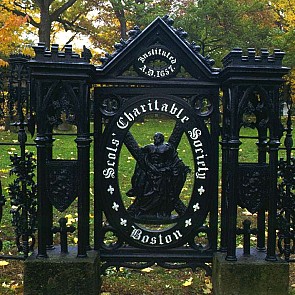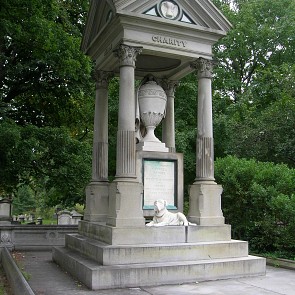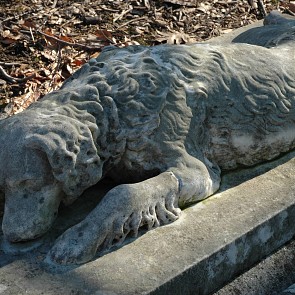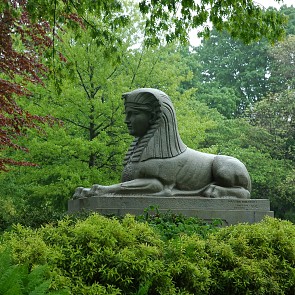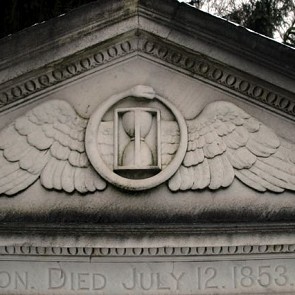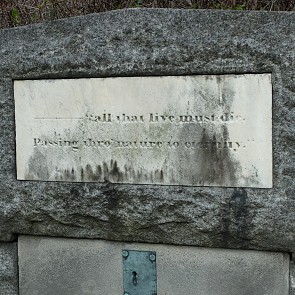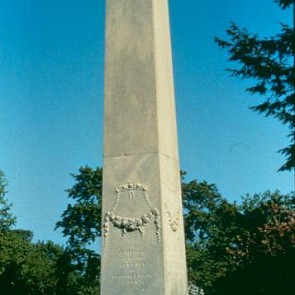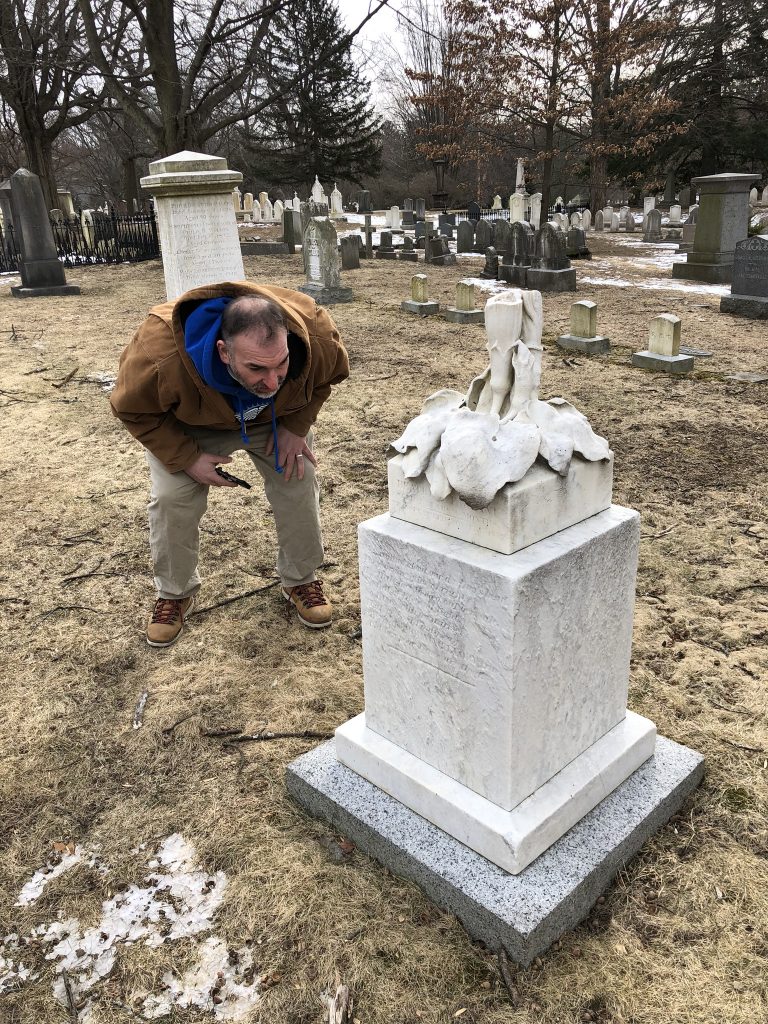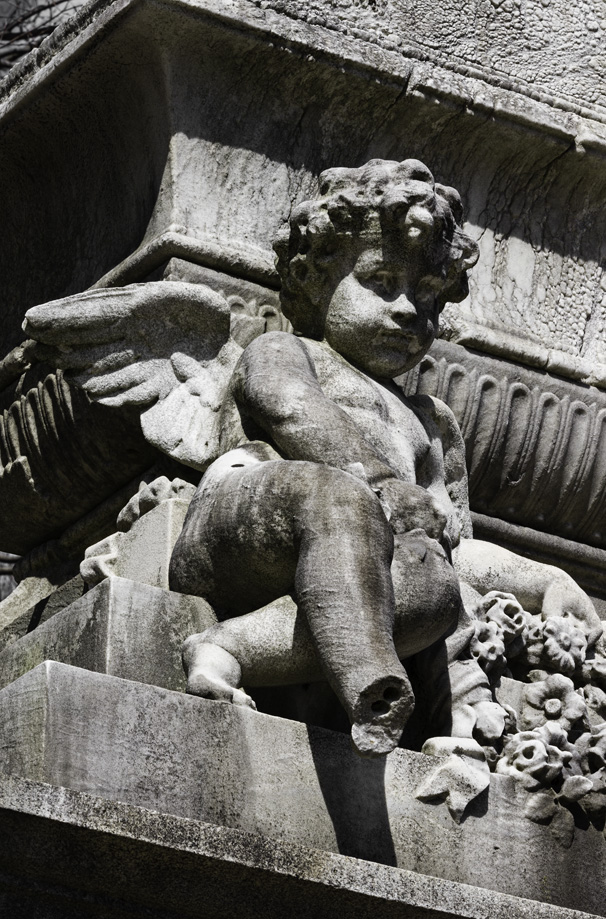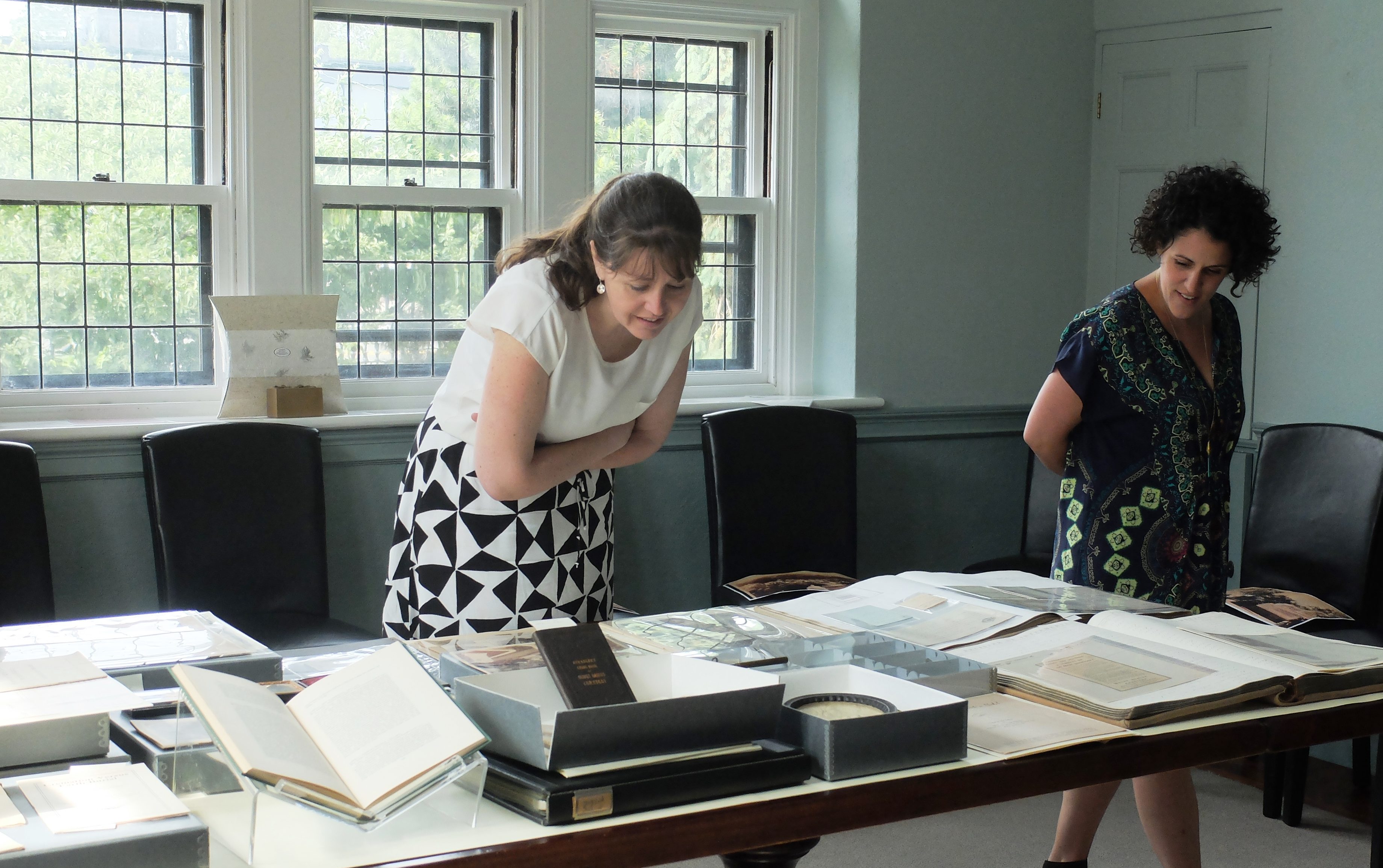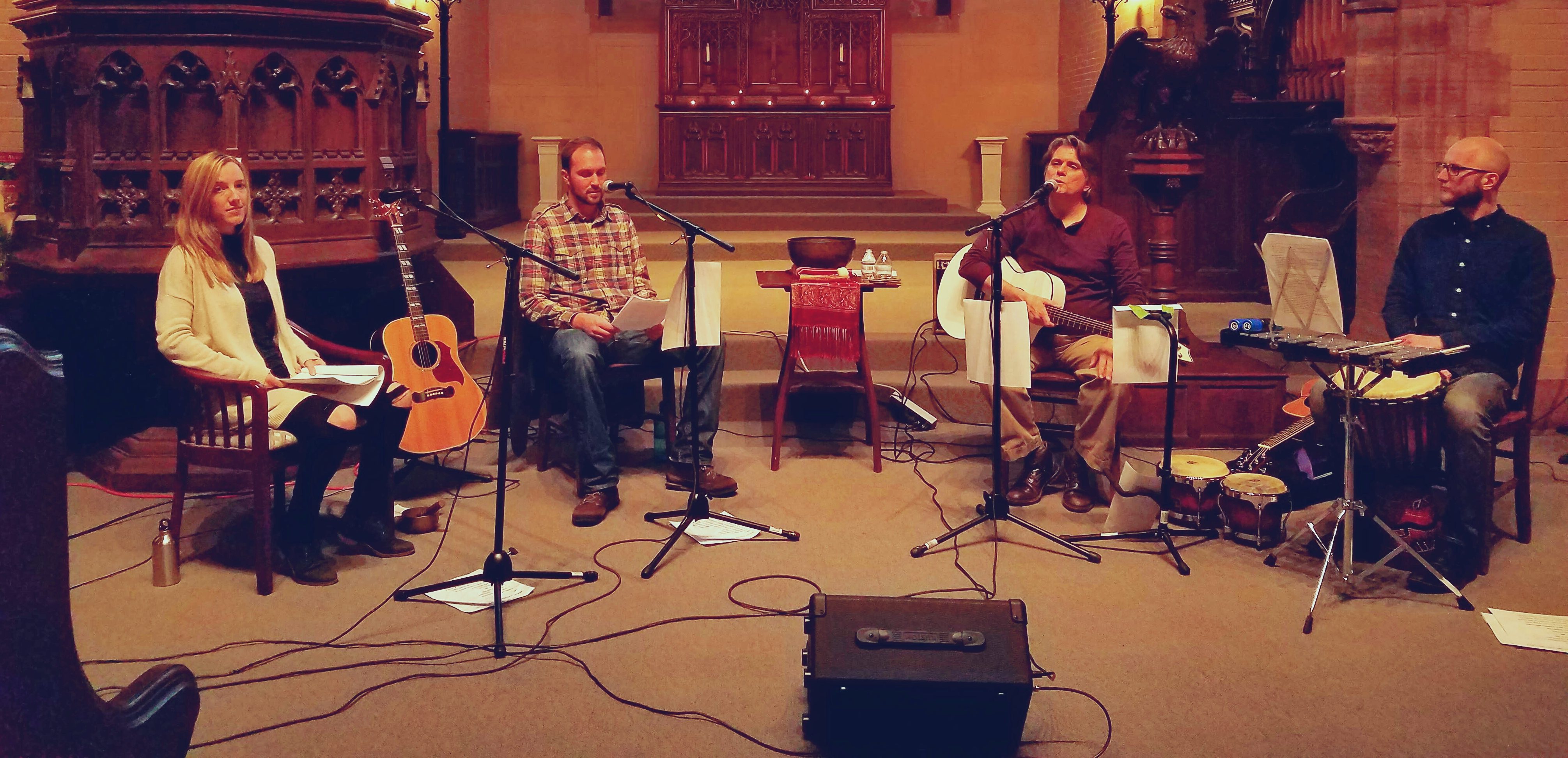Support Preservation of Significant Monuments: Whitney and Fagnani
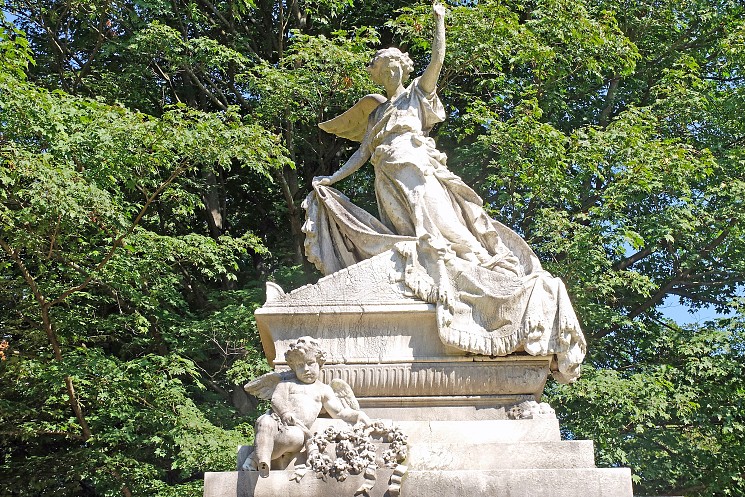
Mount Auburn’s collection of monuments and funerary art give meaning and spiritual significance to the Cemetery’s historic landscape. Dating from the early 19th century through to today, every memorial contributes to the qualities that help make the Cemetery “a site of comfort and inspiration to the bereaved and the public as a whole.” The wide-ranging diversity represented in the monuments, from contemporary flush markers to lavish Victorian sculptures, helps create the aesthetic richness and unique texture of Mount Auburn’s designed landscape.
Preserving our historic monuments and buildings is a priority, and a challenge. After years of exposure to New England weather, many monuments, particularly marble memorials, now require an extra level of care and maintenance to protect and stabilize them. Beginning in 2014, the Friends of Mount Auburn has been working closely with Cemetery preservation and curatorial staff on a multi-year initiative to raise funds to conserve the most significant monuments on our grounds. To date, seven significant monuments have been professionally treated by a sculpture conservator working with the Cemetery. Plans are currently underway for conservation of the Whitney and Fagnani monuments. Both memorials are urgently in need of care and conservation.

Beatrice Fagnani Monument
1857 Marble sculpture of a morning glory flower
Sculptor: Patrizio Piatti (c.1824-1888)
The delicate morning glory sculpture commemorating Beatrice Fagnani (1855-1857) has eroded and cracked over time. The monument is urgently in need of repair and conservation as the flower has broken in half and is being carefully stored inside until repairs are possible. Carved out of Italian marble by the sculptor Patrizio Piatti in 1857, this significant monument is a tender example of Victorian iconography. The morning glory flower, with its fluted form and overlapping leaves, closes in the evening and blooms in the morning, symbolizing death and rebirth. The inscription on the small pedestal is a poem by Maria White Lowell. Conservation will include washing the monument, carefully re-attaching the broken flower and filling any voids or cracks, and treating the monument with a stone consolidant to slow deterioration.
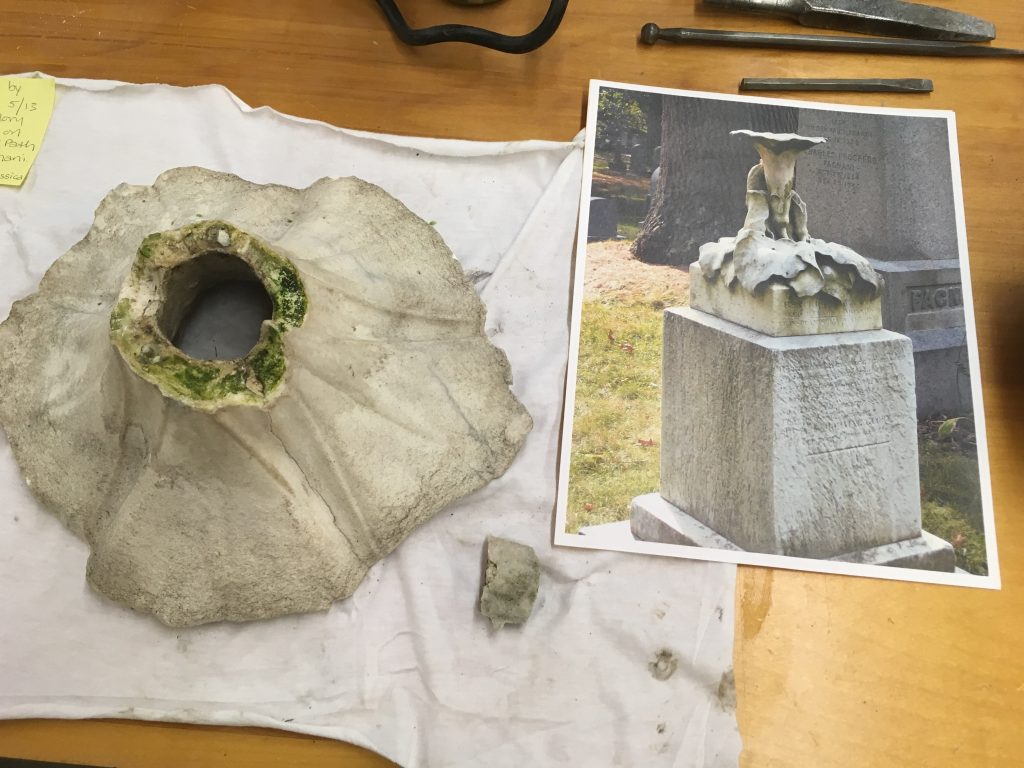
The morning glory sculpture commemorating Beatrice Fagnani (1855-1857) has eroded and cracked over time and is urgently in need of repair. The flower has broken in half and is being carefully stored inside until repairs are possible
Charles Whitney Monument
1883 Marble sarcophagus with sculpture of an angel and putto on a raised pedestal
Sculptor: Nicola Cantalamessa-Pappotti (1833-1910)
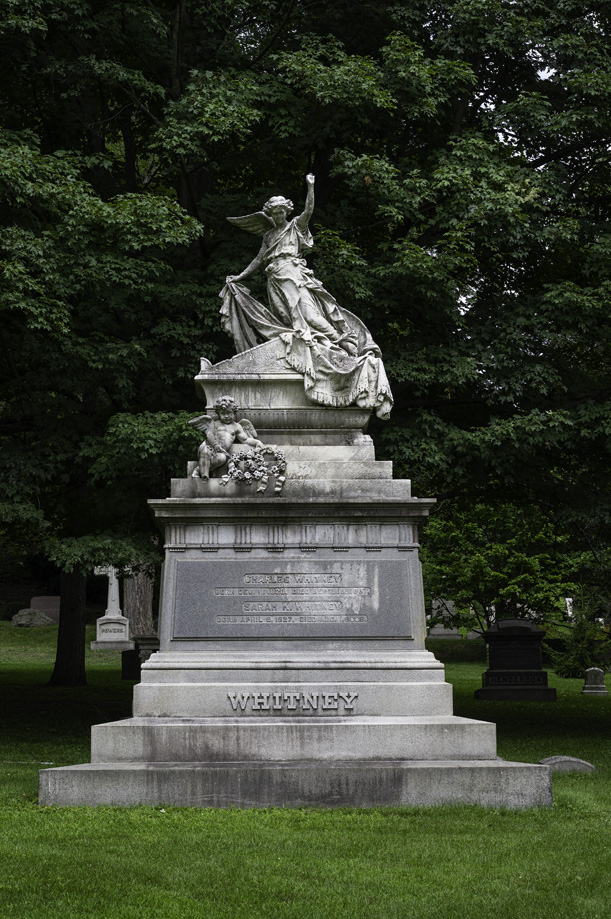
The dramatic Whitney Monument was commissioned by Charles Whitney (1828-1887) for his lot at Mount Auburn. Whitney, who operated one of the largest lumber enterprises in the United States, commissioned the sculptor Nicola Cantalamessa-Papotti to create the large, marble memorial in 1883.
The monument depicts a magnificent angel with outstretched wings atop a large sarcophagus with a putto (a winged figure of a child) holding two floral wreaths at its base. Significant losses are evident, including the large, ornate left wing of the angel and the right foot of the putto which have both been broken off. The monument also shows signs of considerable erosion, and there are cracks and fissures throughout the marble. Conservation treatment will include washing the entire surface of the monument, removing dark gypsum crusts with a handheld laser, repointing the joints in the granite stones that make up the base, filling in all cracks and voids in the marble, and applying consolidant to the marble to stabilize the surface and slow further loss.
Donate today and join us in preserving our most significant monuments, please click here. Or contact Jenny Gilbert, Director of Institutional Advancement at 617-607-1970 or jgilbert@mountauburn.org.
Shakespeare Quotes at Mount Auburn
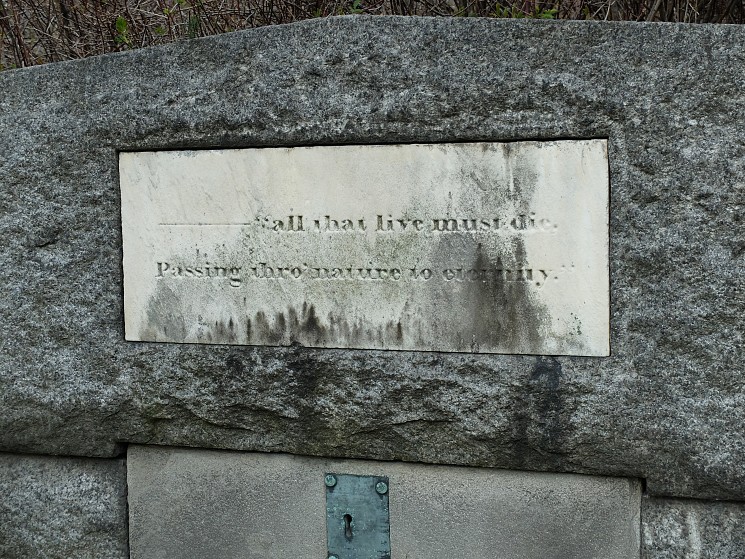
A number of individuals chose quotes from Shakespeare’s works for their own or a loved one’s monument. Some of these notables were Shakespearean actors others just theater lovers. Here are some of the quotes that can be found on stones in Mount Auburn.
The 9th Cambridge Open Archives
The 9th Annual Cambridge Open Archives: “Living and Dying in Cambridge”
A Rare Opportunity to View Mount Auburn’s Archival Materials
Can you imagine having the chance to examine an amazing selection of primary documents, ephemera, and photographs while discussing the history of Mount Auburn Cemetery? Well, this dream came true for the lucky individuals who attended this year’s 9th Annual Cambridge Open Archives.
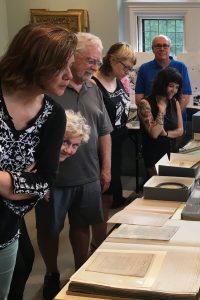 Two groups of twenty curious visitors each joined us on the afternoon of June 19th for the rare opportunity to view archival materials from Mount Auburn Cemetery’s Historical Collections. This year’s theme, Living and Dying in Cambridge, was a particularly good fit for the Cemetery! (more…)
Two groups of twenty curious visitors each joined us on the afternoon of June 19th for the rare opportunity to view archival materials from Mount Auburn Cemetery’s Historical Collections. This year’s theme, Living and Dying in Cambridge, was a particularly good fit for the Cemetery! (more…)
Satigata at Mount Auburn Cemetery
Satigatha Performs at Mount Auburn Cemetery from Mount Auburn Cemetery on Vimeo.
Satigatha, “mindful song” or “chant,” is a unique blend of modern rock, folk, and Buddhist-oriented “kirtan” dedicated to opening the heart of devotion and practice, and inspiring wisdom through contemplative music and interactive chanting. Chris Berlin, Darren Becker, Andrew Stauffer and Alanna Coady consist of both present and former Master of Divinity graduates from Harvard Divinity School. Also featuring the spoken word of Michael Miceli.
